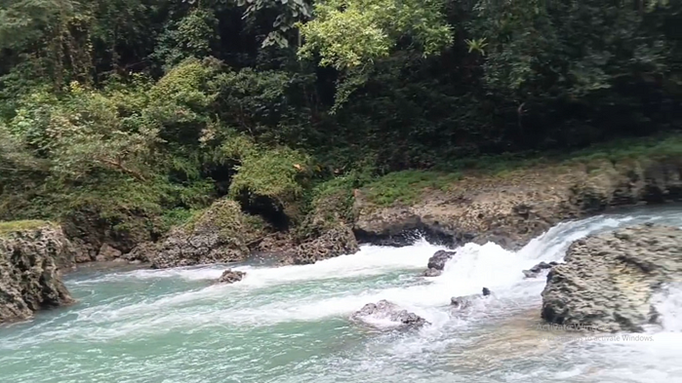Rivers, Sources of Life that must be Preserved
The Kertayasa Tourism Village in Pangandaran can serve as an example for the broader community, to protect rivers as vital sources of life that must be conserved.
Penulis Gabriel Marcelinus Natanael 14 Agustus 2024
BandungBergerak.id – Rivers are witnesses to the historical development of human civilization. For a long time, humans and nature have coexisted harmoniously. Therefore, humans must preserve the rivers that have supported their growth and development. Unfortunately, the communal awareness to protect rivers has not yet emerged. The Kertayasa Tourism Village can serve as an example for the broader community, especially in Indonesia, to protect rivers as vital sources of life that must be conserved.
From the beginning, humanity has always built civilizations near water sources, one of which is rivers. Indeed, rivers have become a sign that human civilizations are growing and developing. This continues to this day. However, for some populations recorded in history, they did not hesitate to compete for these resources for their survival through a series of short or prolonged wars.
This article will compare the utilization of rivers as the primary source of life between the community of Kertayasa Village (and its surroundings) and urban communities, specifically using the example of Jakarta City residents who no longer consider the Ciliwung River as their main life source (only as a supporting aspect of life). This comparison will be discussed from the perspective of river cleanliness. Within it, river cleanliness also includes the sense of belonging of a community in maintaining and preserving their primary source or foundation of livelihood.
Baca Juga: Political Advertisements Board that Invaded Campus
Heaven's Promise for The Sake of Votes
Theranos Going Downhill
Cijulang River
The Cijulang River, which spans approximately 15 km, is one of the rivers running through Kertayasa Tourism Village. The idea of a river as a primary source of livelihood for a community is evident in the life of the people in Kertayasa Village, particularly in Karangpaci Hamlet. One form of its utilization is the opening of a body rafting facility managed by the tourist attraction, Green Canyon, Pangandaran.
As a life-supporting aspect, the residents of Kertayasa Tourism Village have an awareness of maintaining and preserving the river’s cleanliness. As mentioned earlier, cleanliness is one of the important aspects that will be discussed in this article. Efforts to maintain this cleanliness are inseparable from the active role of the village government, which continuously provides facilities –such as garbage bins– and information to residents to keep the river clean. Upstream, there are no residential settlements, which is a supporting factor in maintaining the river’s cleanliness.
On the other hand, this well-maintained river raises questions for many people who live alongside rivers and often dispose of their waste there. Why does the habit of throwing garbage into rivers persist to this day? Without intending to discredit any party, the behavior of indiscriminate waste disposal is still reflected in the life of urban communities.
One example to be highlighted is the residents of Jakarta who live alongside the Ciliwung River. The appearance difference between the Cijulang River and the Ciliwung River is stark. It seems that modern life, which no longer depends on rivers due to income supported by other aspects, has forgotten the importance of river conservation. Many efforts have been made by the village government to restore rivers damaged by human actions. However, in reality, these efforts have not yet brought about a significant change in communal awareness.
Education is the Key
So, what can the government do if these maintenance efforts are one-sided and lack a positive response from the community? Education is the key to fostering a society with good moral awareness towards their environment. Nowadays, ecological education is gaining an important role in early childhood to university-level education. The community also receives ecological outreach.
From a religious perspective, ecological repentance is also being echoed by religious leaders. In a journal accessed through the Open Integrity Journal titled “Environmental Maintenance: A Comparative Study Between the Laudato Si Encyclical and Muhammadiyah Environmental Theology,” there is a call for ecological repentance from the religious side made by the Catholic Church and Muhammadiyah. Certainly, extreme ecological repentance will be difficult for the broader society to undertake. Ecological repentance can be achieved through simple actions that have a significant impact on the surrounding environment.
On social media, many activities are influenced by content creators to promote clean rivers. One example is @/pandawara, which has content about cleaning dirty rivers and lakes in Indonesia. This activity has a positive influence on young people, although it has not yet reached the older generation widely.
Thus, efforts to revitalize rivers in urban and other rural areas are possible. Rivers regain their essential role as the main source of life for the broader community. The residents of Kertayasa Tourism Village can serve as an example for other communities or societies trying to restore the essential role of rivers in human life. Of course, this effort will not be achieved in a short time. There is a process to be undertaken and communal awareness and willingness to realize this good dream. This maintenance also indicates that society and nature must coexist with mutual respect. Humans who utilize natural resources strive to maintain them without excessive exploitation. Everything in moderation is good, and anything excessive brings destruction to future generations.


